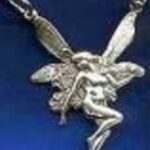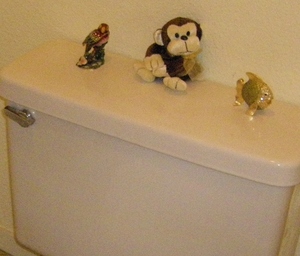The concept of a carnivorous garden plays with the imagination. These exotic, fairy tale like creatures can be cultivated to munch on your insects in the wilds of your suburban jungle. Set up a large planter outside, on your porch or in the kitchen to unleash terror on the creepy crawlies.
Plants to Try
If you live in a cold climate try the following carnivorous plants. These all require a dormant period and can tough it out through a real winter. If you don’t keep them outside, you can fake the winter and let them hibernate in the fridge.
• Butterwort, also known as Pings, the pinguicula vulgaris variety
• Purple Pitcher – can handle a deep freeze
• Sundew – these are annuals, so be sure to collect the seeds after flowering
• Venus Fly Trap – the most common carnivorous beast. These can survive a brief outdoor freeze, but do best in temperate conditions or brought indoors for the winter.
Those of you in warm climates can plant the following without any special hibernating instructions. They can be grown in a cold climate as well, but be sure to bring them in before it becomes too chilly, early fall until mid spring.
• Trumpet Pitcher
• Sundew – since it is an annual
• Butterwort – the pinguicula primuliflora variety
Making a Bog
Carnivorous plants like a moist environment. Bog like areas leave a nice welcome mat for insects. Try adding ornamental grasses to your carnivorous garden to make it look super fly. Try the following;
• Corkscrew Rush
• Horsetail
• Spike Rush
• Square Rush
Soil Mixture
In a bucket, mix 1 part sand, 1 part peat and 1 part perlite for the soil. Wear a facemask to avoid breathing in the dust.
Stir in lots of water until the mixture is very moist, dry peat will suck moisture from the plants.
Ideally, place a layer of rocks in your container and then add the soil mix to about two inches of space at the top.
Plant your carnivorous creatures and let them eat flies!
Water
Carnivorous plants are finicky. As much as they love a moist environment, they will not thrive on any sort of hard water. Collected rainwater is really the best bet. If you are unable to do this, or if it hasn’t rained in quite some time, then set a pitcher of tap water on the counter for several days before giving your plants a drink. The water level needs to stay between moist and soaking, never letting the soil dry completely out, so keep an eye on your garden.
Feeding
For the most part, outdoor plants will happily catch what they need to survive and do not require hand feeding. If you have a Venus Fly Trap living indoors, they typically consume 2-3 flies a month.
You can also feed your plant dead flies or insects, if they are pesticide free. In other words, don’t spray a fly with Raid just to feed them to your plant.
Never, ever feed your carnivorous plant hamburger meat, this will kill them. The fat content is too high.
Additional Care Tips
Cut off dead leaves and trap heads as they appear. This is not always a sign that the plants are unhealthy. But if you leave the dead pieces on, it can cause fungal infections.
Although carnivorous plants are a wonder, it is wise not to poke at them just to show off their traps. This overuse can prove fatal to the plant. Let it work on it’s own, don’t tease it.
Add little ceramic figurines to your garden to add to the mystique. Tiny signs that say “BEWARE” or little aquarium pieces make for a magical garden.







